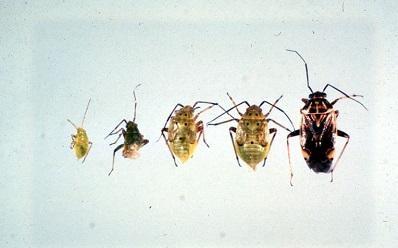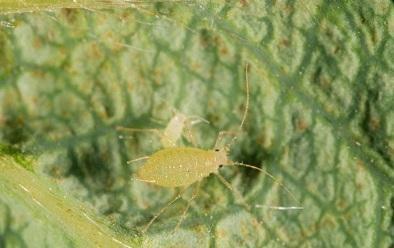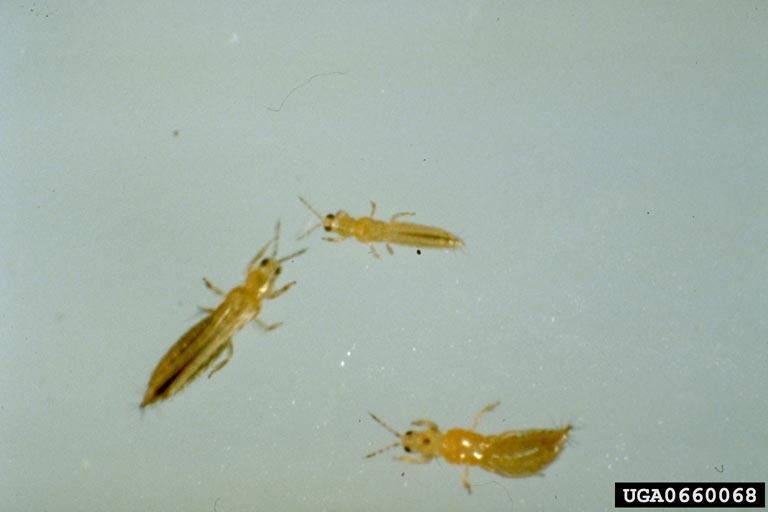Spring Pest Scouting in Strawberries
With the majority of freezing night time lows behind us, strawberry growers should begin scouting for pests during bloom. Earliglow is already in bloom on the Lower Eastern Shore and other cultivars will soon follow with the warm weather forecasted for 4/12-4/16. Be on the watch for spring pests during bloom including thrips, tarnished plant bug, leafrollers, aphids, leafhoppers which begin attack plants during flowering in Maryland.

Thrips (fig. 1) and tarnish bugs (fig.2) can be found on the blossom and are easiest to see when using a hand lens of 10X or more. Tarnish bug and thrips can lead to deformations in fruit and aborted fruit. Pests on strawberry blossoms can be scouted for by tapping flower clusters above a paper cup or plastic bag to see if the bug falls off the blossoms. The recommended control threshold for both thrips and tarnish bugs on strawberries is 50% or if 15 of the 30 blossom clusters are occupied.

Aphids( fig.3) leafhoppers and leafrollers can all be found on strawberry foliage. There should be zero tolerance for aphids and control is recommended if any aphids are observed on strawberry leaves. Leaf roller caterpillars feed on strawberry leaves and will also lay their eggs on strawberry leaves surrounded by a net like web. Thresholds for leafroller caterpillars are if more than 10-20% of the crop leaves are infested. Scout using the tap and cup method or visually observed if more than 10-20% of leaves appear to have feeding damaged. Lastly, Leafhoppers (potato leafhoppers) will also cause the leaf to curl in on itself but will not leave large holes in leaves like leafrollers and are best observed with a hand lens to see. The economic threshold used to recommend controlling potato leafhopper is 2-3 nymphs per leaf. Scout by checking the undersides of 5-10 leaves per 10–20 plants. Check for potato leafhoppers also using the tap and cup method.
Make sure to scout your fields weekly for all of these pests as their populations can grow exponentially.
This article appears in the April 2022, Volume 13, Issue 1 of the Vegetable and Fruit News
